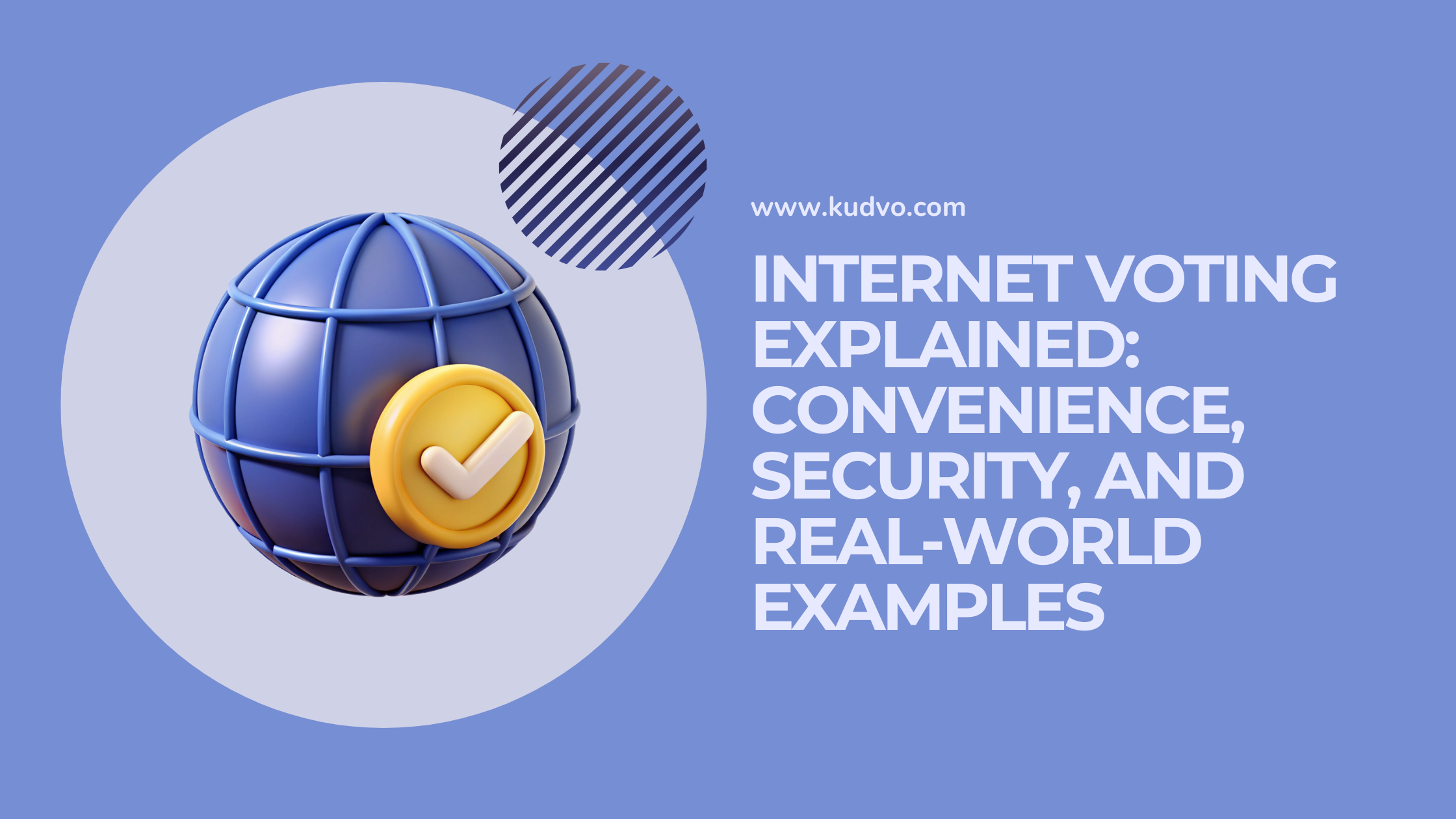Internet Voting Explained: Convenience, Security, and Real-World Examples
Introduction
What if you could vote from your couch—in your pajamas—without ever stepping into a polling booth?
Welcome to the future of democracy: internet voting. As digital tools reshape how we shop, work, and communicate, many countries are exploring how to bring voting into the 21st century.
But is it safe? Is it reliable? And who’s doing it successfully?
In this post, we’ll break down the basics of internet voting, explain its main benefits and security concerns, and share real-world examples of how it’s being used. By the end, you'll understand not just how it works—but what it could mean for the future of democracy.
Brought to you by www.kudvo.com—your source for digital innovation insights.
1. What Is Internet Voting?
Internet voting, or online voting, allows citizens to cast their ballots using an internet-connected device—usually a computer or smartphone.
Unlike electronic voting machines found in polling stations, internet voting can happen remotely, giving voters the flexibility to participate from anywhere with a secure connection.
There are two main types:
Remote Internet Voting – Cast votes from home or abroad through a secure portal.
Kiosk Internet Voting – Done on designated devices at controlled locations, like libraries or municipal buildings.
This method is especially useful for:
Citizens living abroad
People with disabilities
Remote communities
Busy professionals and students
2. The Benefits of Internet Voting
Online voting offers a range of benefits, especially for increasing accessibility and convenience.
🌍 Convenience
Vote anytime, anywhere, without waiting in line.
Especially helpful for overseas voters or those with mobility challenges.
📈 Higher Voter Turnout
Countries like Estonia have seen improved participation, particularly among younger voters.
Making voting easier tends to encourage more people to do it.
🕐 Faster Results
Ballots are tallied automatically and securely.
Reduces time and labor compared to manual counting.
🌱 Eco-Friendly
Cuts down on paper ballots, transportation, and polling station energy use.
3. Is Internet Voting Secure?
Security is the biggest concern—and rightly so. When it comes to democracy, trust in the system is everything. Here are key security practices used to protect online voting:
🔐 Encryption
Votes are encrypted end-to-end to prevent tampering or interception during transmission.
🧾 Voter Authentication
Secure logins using government-issued IDs, biometrics, or digital signatures ensure only eligible voters can access the system.
🔄 Verifiability
Some systems offer vote verification, where voters can double-check that their vote was counted correctly using a receipt or tracking code.
🛡️ Independent Audits
Regular audits and penetration testing by independent cybersecurity experts help ensure integrity.
Despite these safeguards, critics argue that no internet-based system is 100% immune to hacking, phishing, or denial-of-service attacks. That’s why some countries are cautious or limit internet voting to specific voter groups.
4. Real-World Examples of Internet Voting
Let’s look at how different countries are using—or testing—online voting.
🇪🇪 Estonia
The world leader in internet voting.
First adopted in 2005
Over 44% of voters now cast ballots online
Uses a digital ID card for secure login
Citizens can re-cast their vote online multiple times, with only the final one being counted
🇨🇭 Switzerland
Ran several pilot projects.
Introduced internet voting for Swiss citizens abroad
Paused nationwide rollout in 2019 due to security concerns
Continues testing and refining the system
🇨🇦 Canada
Used internet voting in local and municipal elections.
Towns like Markham, Ontario and Halifax have seen success
Voters appreciate the ease, especially during harsh weather or pandemics
🇺🇸 United States
Internet voting is limited and controversial.
Some states allow military and overseas voters to cast ballots via secure portals or email
Ongoing debates over whether it can be expanded safely
Conclusion
Internet voting has the potential to make democracy more accessible, inclusive, and modern. With convenience and speed as clear advantages, it's no wonder that several countries are exploring its possibilities. However, security and trust remain critical to its success.
As technology evolves and cybersecurity measures improve, more governments may find the confidence to implement internet voting on a broader scale. Until then, thoughtful experimentation and transparent oversight will be the key to progress.
👉 Curious about more innovations transforming our world? Visit www.kudvo.com for deep dives into digital solutions shaping our future.
